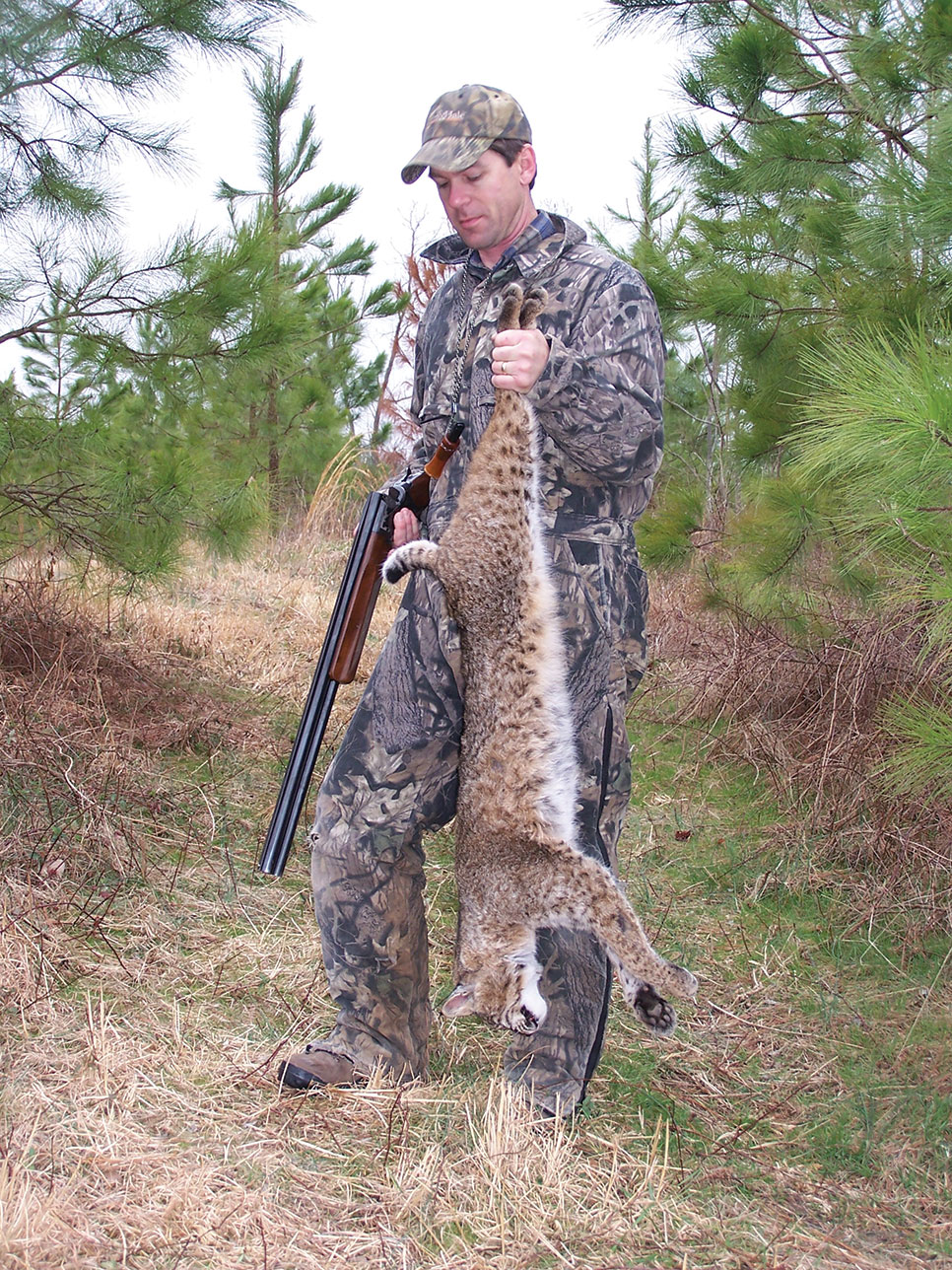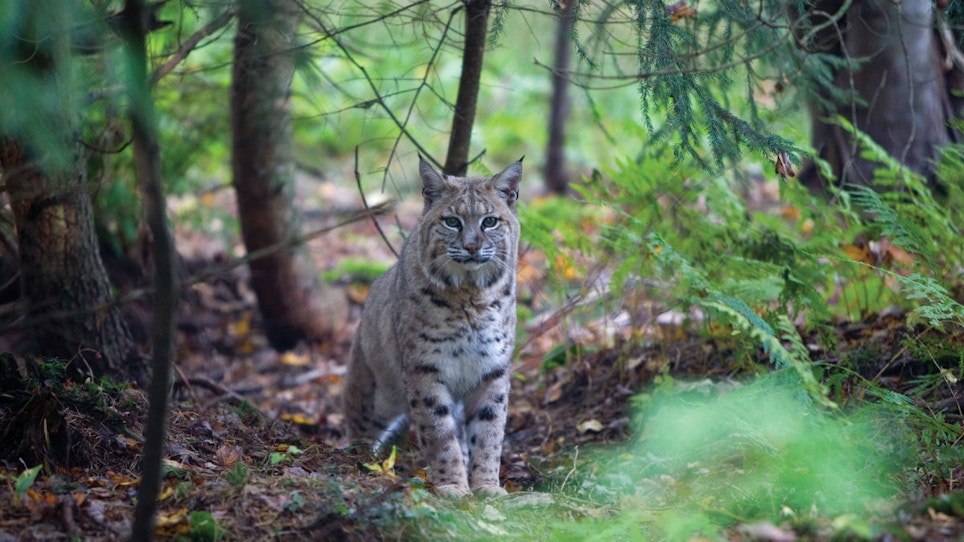Hunters and trappers don’t just provide on-the-ground help. They serve as specimen collectors, data gatherers and eyes and ears for wildlife biologists and other scientists, all of which benefit wildlife conservation. Through bowhunter wildlife observation surveys, a number of states rely on hunters to record the number of animals observed while hunting.
“They give us a look at population trends of certain species of wildlife. That gives us an idea of what’s going on with wildlife throughout the state,” says Virginia Department of Game and Inland Fisheries furbearer biologist Mike Fies.
“Bowhunters tend to be the best ones to get good data. They are camouflaged, quiet and still and they stay in one place for several hours at a time. They tend to be pretty observant and knowledgeable about wildlife, too. The data we get isn’t necessarily scientific, but it’s reliable enough that we can use it to show trends,” adds Fies.
The benefits of trapping for science
When Will Gulsby needed 20 live coyotes for a research project, he briefly considered catching the predators himself. The two-year study looked at home ranges, movements and activities of the animals in central Georgia. A post-doctoral researcher at the University of Georgia at the time, Gulsby ultimately realized that he had neither the time nor the knowledge to catch that many coyotes.
“I’ve done some trapping, but in no way was I proficient at it,” recalls Gulsby. “There was a significant amount of funding involved in this research, not to mention there were a lot of people involved, so we wanted to make sure we had the greatest probability of success.”
That meant catching the coyotes quickly and humanely. As with most any research project, time was limited. Gulsby turned to the Georgia Trappers Association, a group of dedicated trappers and predator hunters, many of whom have decades of experience with coyotes.
Related: Why are thousands of rural mail carriers counting roadside wildlife?
“They wanted to be part of this, so they connected me with Dan Eaton, a trapper who had a lot of experience catching coyotes,” he says. “I’ve used the services of several other trappers in other research projects I’ve been involved with. It just makes sense to use people who are very good at what they do.”
Aside from on-the-ground knowledge, the folks Gulsby hired for various research projects had a few other things that he didn’t: The right tools and enough time. Trapping (live-trapping coyotes in particular) not only requires specialized traps, it takes a lot of time to run a successful trap line. One conservation study, which examined the impact of coyote removal on whitetail fawn recruitment, covered 10,000 acres and required about seven months of trapping divided over two years.
“I would have never had the time to do what the trappers did. Dan (Eaton) actually sub-contracted with some other trappers he knew who were skilled at catching coyotes, so that really helped. The project just would not have worked if we had only taken a few coyotes off the study area,” he adds.
What’s more, those trapping efforts were conducted in the spring when most hobby trappers have long since hung up their steel.
“I participated because it’s what I do for a living and I was able to make some money off it, but I also helped with the project because I thought it would be a good experience,” says Eaton, who has trapped for 40 years.
It not only turned out to be fun, it was also educational. As a full-time trapper and nuisance-animal specialist, Eaton got a front-row seat to the research efforts many hunters and trappers never see. He also learned a few things about coyotes.
“They aren’t as smart as we think they are. On several occasions during the live-trapping effort, I caught a coyote that we already caught. That proves that they don’t always learn to avoid a trap the second time,” he recalls.
Donated carcasses pivotal to conservation research

Hunters and trappers were critical to a an in-depth bobcat study conducted by West Virginia University. The majority of more than 500 carcasses were donated by hunters between 2014-2015.
Virginia hunters count everything from predators and prey to stray dogs and cats and even other hunters. In all, they are asked to keep a tally of 21 different items. Ohio bowhunters are asked to count just 11 different animals, including such elusive species as badgers, mink and bobcats. But count, they do. Nearly 700 Ohio bowhunters spent more than 37,000 hours in a tree stand in 2015. They observed 37½ raccoons per 1,000 hours, which was the most common animal sighted. The next most common was coyotes, with 14.7 per 1,000 hours. Raccoons remained stable since the survey began in 1990. Coyotes, however, skyrocketed from about three sightings per 1,000 hours to about 19 in 2010. Equally surprising is the downward trend in such species as opossums, skunks and red and gray fox, which correlates with the increase in coyotes.
Researchers at West Virginia University wouldn’t have been able to complete an in-depth bobcat study without hunter and trapper assistance, either. Graduate student Stephanie Landry collected nearly 300 bobcat carcasses in 2014, the first year of her study, and more than 200 in 2015.
“We could have trapped some ourselves, but there’s no way we would have gotten the number we did and from as many parts of the state. Hunters and trappers were critical to the study,” she notes. “The more specimens we have, the better our data will be.”
Landry reached out to the West Virginia Trappers Association to let members know about the study. She also mailed information to everyone who checked in a bobcat in recent years, urging them to donate carcasses. Anyone who killed a bobcat was instructed to take it to the nearest Department of Natural Resources regional office. The vast majority of the carcasses she got came from trappers, but a few were shot by hunters.
“The response was fantastic. Everyone I spoke with was very supportive of our research project. We could not have done this without their help,” says Landry.
Specimen donations offer key insight to help shape future regulations
Although the project is not complete, the results could shape future bobcat hunting and trapping regulations. So far, Landry says West Virginia’s bobcat population seems to be healthy and is similar to what it was in a study conducted in 1980. However, juvenile survival rates seem to be considerably higher and reproductive rates are slightly higher. She is also examining things like diets, parasites and sex ratios to get a better understanding of the state’s bobcats.
A similar study took place in Florida. Instead of bobcats, researchers at the University of Florida collected coyote carcasses from hunters and trappers in an effort to study the animals’ diets. Scientists wanted to determine if the predators were eating game animals or endangered or threatened species.
“The cost associated with trying to collect a whole bunch of specimens by ourselves shows you how important hunters and trappers are to research projects like the one Stephanie Landry is doing,” says West Virginia University wildlife professor Dr. James Anderson. “There is no way we could do these types of studies without donations.”
Related: Citizen scientists' role in 2017's total solar eclipse
He is researching the various ways scientists have relied on hunters and trappers and found there is an increase in the use of what he calls “citizen scientists.” Such things as waterfowl wing surveys and even bow and turkey hunter observation surveys have been around for years, but they are relying more on hunters and trappers to provide parts or entire carcasses.
While scientists are still trying to determine how reliable information gathered entirely by hunters is, Anderson says long-term data sets can most definitely show significant changes in population trends. That data can also help influence management decisions.
“Budget cuts and other changes will likely mean we will see scientists reach out to sportsmen even more in the future,” says Anderson. “That’s not a bad thing. These research projects can have an impact on hunting and trapping management decisions, so it’s great to get those who are impacted more involved.”
Scientists rely on hunters for skilled observation
Wildlife research depends on people like you. That’s why so many scientists reach out to the hunting and trapping community. If you want to help out with wildlife conservation as a citizen scientist, consider joining various sportsmen’s groups like state trappers and fur takers associations. Pay attention to various hunting forums, too. Biologists will sometimes post a request for help.
If you bowhunt for deer and want to participate in your state’s observation survey, call your wildlife agency’s furbearer or small-game biologist. If that person doesn’t oversee the program, they’ll likely know who does.






